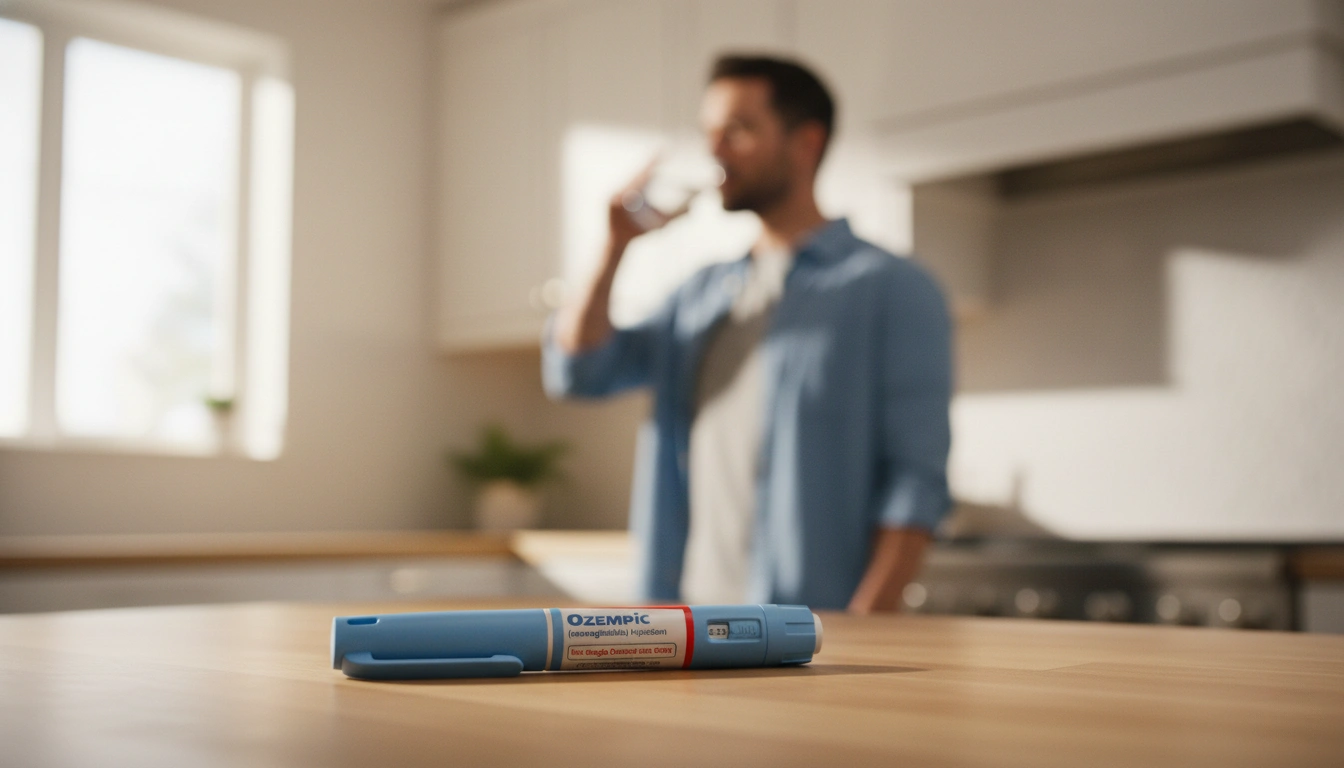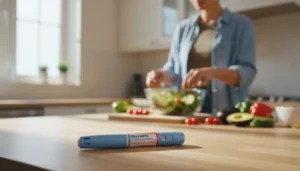When to Increase Ozempic Dose: A Comprehensive Guide to Safe and Effective Use

Introduction
Did you know that nearly one in ten Americans has diabetes, and the numbers are on the rise? With the increasing prevalence of this condition, the demand for effective management options has never been greater. One such option is Ozempic® (semaglutide), a medication that has garnered attention for its role in managing blood sugar levels for individuals with type 2 diabetes. However, as with any medication, understanding when and how to adjust the dosage is crucial for maximizing benefits and minimizing potential side effects.
At TrimRx, we believe in providing our clients with the knowledge they need to navigate their weight loss and health journeys successfully. In this blog post, we will explore the appropriate times to consider increasing the Ozempic dose, the factors that influence these decisions, and how our personalized approach to weight loss can support you in achieving your health goals.
By the end of this article, you will have a clearer understanding of Ozempic dosing and the importance of regular monitoring and communication with your healthcare provider. Together, we’ll delve into the specifics of dosage adjustments, what to monitor, and how to ensure a successful treatment plan that aligns with your unique health needs.
Understanding Ozempic and Its Dosage
Ozempic is an injectable medication belonging to a class of drugs known as GLP-1 receptor agonists. It works by mimicking the effects of the glucagon-like peptide-1 hormone, which helps regulate blood sugar levels, slows gastric emptying, and even promotes satiety. This medication is primarily prescribed for managing type 2 diabetes but is also noted for its potential benefits in weight management.
The typical Ozempic dosing regimen is structured to allow gradual adjustments based on individual responses and tolerance. Here’s a breakdown of the dosing schedule:
-
Initial Dose: Treatment usually begins with a low dose of 0.25 mg once a week for the first four weeks. This initial dose helps your body acclimate to the medication and reduces the risk of gastrointestinal side effects, such as nausea.
-
Maintenance Dose: After the initial four-week period, the dose is typically increased to 0.5 mg once weekly. This is considered the standard maintenance dose for effective blood sugar control.
-
Further Increases: If additional glycemic control is necessary, your healthcare provider may recommend increasing the dose to 1 mg or even 2 mg once a week after at least four weeks at the previous dose.
Understanding this structured approach is key to recognizing when to increase the Ozempic dose. But how do we determine if an increase is warranted?
Signs It’s Time to Increase Your Ozempic Dose
The decision to increase your Ozempic dose should always be guided by your healthcare provider, who will take into account several factors, including your blood sugar levels, side effects, and overall health. Here are some signs that you might need to discuss a dose increase with your provider:
1. Persistent High Blood Sugar Levels
If your blood glucose readings consistently remain above your target range, it may indicate that your current dose is insufficient. Regular monitoring of your blood sugar levels is essential. If you notice that your A1C levels haven’t improved after four weeks at the maintenance dose of 0.5 mg, it may be time to consider a dose adjustment.
2. Stabilized Tolerance to Initial Side Effects
Many individuals experience mild gastrointestinal side effects when starting Ozempic, such as nausea or diarrhea. If you find that these side effects have diminished or become manageable, it may be a good time to talk to your healthcare provider about increasing your dose to improve your glycemic control.
3. Weight Management Goals
For those using Ozempic as part of a weight management strategy, achieving a gradual weight loss of 1-2 pounds per week is often a desired outcome. If your weight loss plateaus for several weeks despite adherence to diet and exercise, it might be worth discussing a dosage increase with your healthcare provider.
4. Individual Health Changes
Changes in your health status, such as new medical conditions or changes in lifestyle, may also warrant a reevaluation of your Ozempic dosage. If you’ve experienced significant changes, such as increased physical activity or dietary changes, it’s vital to communicate these to your healthcare provider.
The Importance of Regular Monitoring
Regular monitoring of your blood sugar levels and overall health is crucial when adjusting any medication, including Ozempic. Here are some key points to keep in mind:
1. Use of Glucometers or Continuous Glucose Monitors
Utilizing a glucometer or a continuous glucose monitoring device can help you track your blood sugar levels effectively. Keeping a log of your readings can provide valuable insights for discussions with your healthcare provider.
2. Scheduled Follow-Ups
Regular follow-ups with your healthcare provider are essential for evaluating how well your current treatment plan is working. These appointments can help identify trends in your blood sugar levels and whether an increase in your Ozempic dose is necessary.
3. Communication is Key
Open communication with your healthcare provider about your experiences with Ozempic, including side effects and effectiveness, is critical. This information will aid them in making informed decisions regarding your dosage.
How TrimRx Supports Your Weight Loss Journey
At TrimRx, we understand that every individual’s weight loss journey is unique. Our personalized weight loss programs are designed to provide the support and resources needed to achieve sustainable results. Here’s how we can assist you:
1. Personalized Assessment and Treatment Plans
We encourage individuals to take our free assessment quiz to determine eligibility for our prescription weight loss medications, including Ozempic. This personalized approach allows us to tailor treatments based on individual health profiles and goals. If you’re interested in determining your eligibility for prescription weight loss medications, take our free assessment quiz here.
2. Comprehensive Support Services
Our services encompass more than just medication. We offer comprehensive support, including doctor consultations, lab work, and unlimited access to our team for ongoing assistance. We believe that sustainable weight loss should be achieved through science, empathy, and a transparent approach.
3. Access to Quick-Access Supplements
In addition to our personalized programs, we offer quick-access supplements like our GLP-1 Daily Support and Weight Loss Boost. These supplements are designed to enhance your overall wellness during your weight loss journey. If you’re interested in exploring these options, you can find more information about GLP-1 Daily Support here and Weight Loss Boost here.
Conclusion
Understanding when to increase your Ozempic dose is a vital aspect of managing your diabetes and health effectively. By closely monitoring your blood sugar levels, recognizing signs that indicate the need for a dose adjustment, and maintaining open lines of communication with your healthcare provider, you can ensure that you’re getting the most out of your treatment.
At TrimRx, we are dedicated to supporting you on your path to sustainable weight loss through our personalized programs and compassionate care. Remember, every journey is unique, and we’re here to help you navigate yours with science, empathy, and transparency.
FAQ
How often should I monitor my blood sugar while on Ozempic?
It’s important to monitor your blood sugar levels regularly, ideally daily, especially when starting Ozempic or adjusting your dosage. Regular checks will help you and your healthcare provider make informed decisions about your treatment.
Can I use Ozempic for weight loss?
Ozempic is primarily approved for managing type 2 diabetes, but it may also have weight loss benefits. If you’re interested in using Ozempic for weight management, consult your healthcare provider for guidance.
What should I do if I miss a dose of Ozempic?
If you miss a dose of Ozempic, inject it as soon as you remember within five days. If it’s been more than five days, skip the missed dose and continue with your regular schedule.
What are the common side effects of Ozempic?
Common side effects may include nausea, vomiting, diarrhea, stomach pain, and constipation. If you experience persistent or severe side effects, contact your healthcare provider immediately.
How can TrimRx help me with my weight loss journey?
TrimRx offers personalized weight loss programs, comprehensive support services, and access to prescription weight loss medications. We’re here to guide you every step of the way. Take our free assessment quiz to get started today!

Transforming Lives, One Step at a Time
Keep reading
Navigating Your Treatment: How Many Pens in an Ozempic Box and What It Means for Your Health Journey
Curious how many pens in an Ozempic box? Our guide breaks down Ozempic pen strengths, doses, and how TrimRx supports your weight management journey. Click to learn more!
Empowering Your Health: A Comprehensive Guide on How to Use Ozempic Pens Effectively
Learn how to use Ozempic pens safely and effectively with our step-by-step guide. Master preparation, injection, & disposal for your weight management journey. Get expert tips!
Understanding Your Ozempic Pen: How to Tell When It’s Empty
Wondering how do I know when my Ozempic pen is empty? Learn key indicators, the dose counter trick, and proactive tips for consistent dosing.



